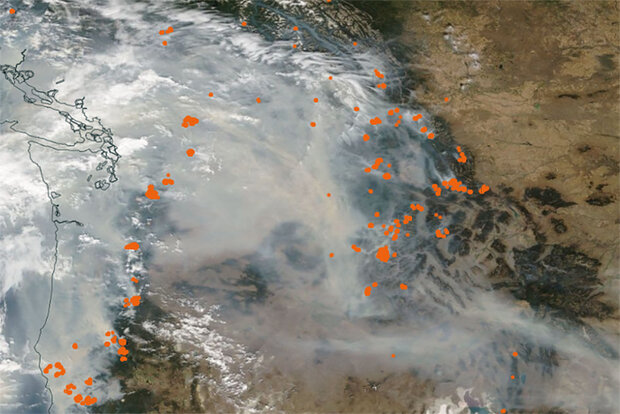Study of wildfire plumes provide insights into methods that might cool the planet
Wildfires ravage western North America, visible from space. Credit: NASA Worldview
The dynamics that lift smoke from large wildfires into the upper atmosphere could potentially be employed one day to help temporarily cool the planet, based on the findings of a modeling study led by NOAA scientists.
Inspired by a giant fire cloud generated over the Pacific Northwest in 2017, the author team investigated whether heat from the sun could loft light-reflecting material mixed with heat-absorbing particles several miles into the stratosphere from lower altitudes. Once in the stratosphere, the reflective material would dim sunlight and cool the planet below. A description of the process, called solar-powered lofting, was published in the journal Science Advances.
The NOAA-led team, which also includes scientists from CIRES, NCAR, the University of Colorado, the German Aerospace Center, and Jinan University in China, used the NCAR Community Earth System Model to simulate solar-powered lofting in order to calculate the amount of light-absorbing black carbon particles required to effect substantial lofting. The suitability of the model was demonstrated by successfully reproducing the lofting in the 2017 Pacific Northwest fire plume.
Read more at the link below.
